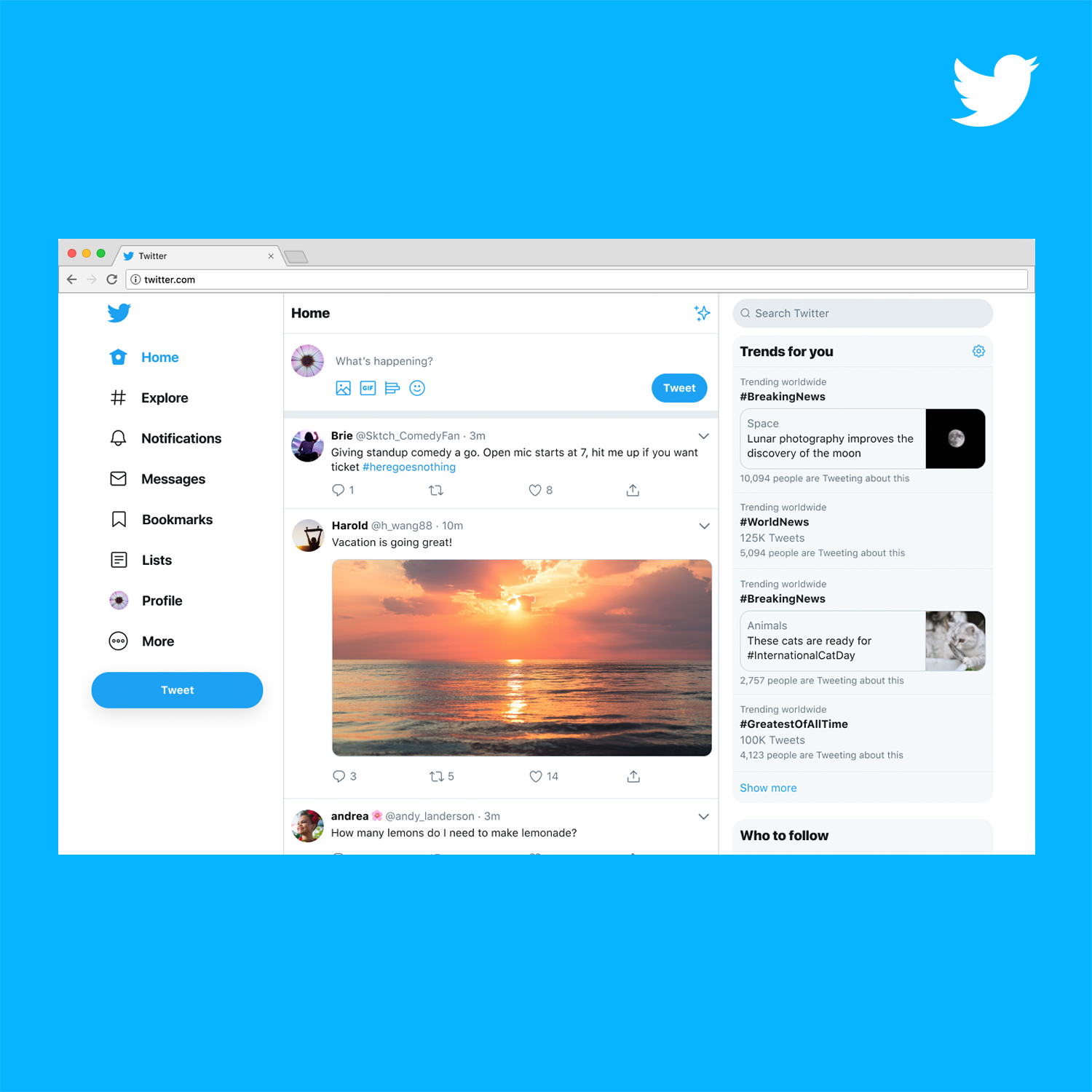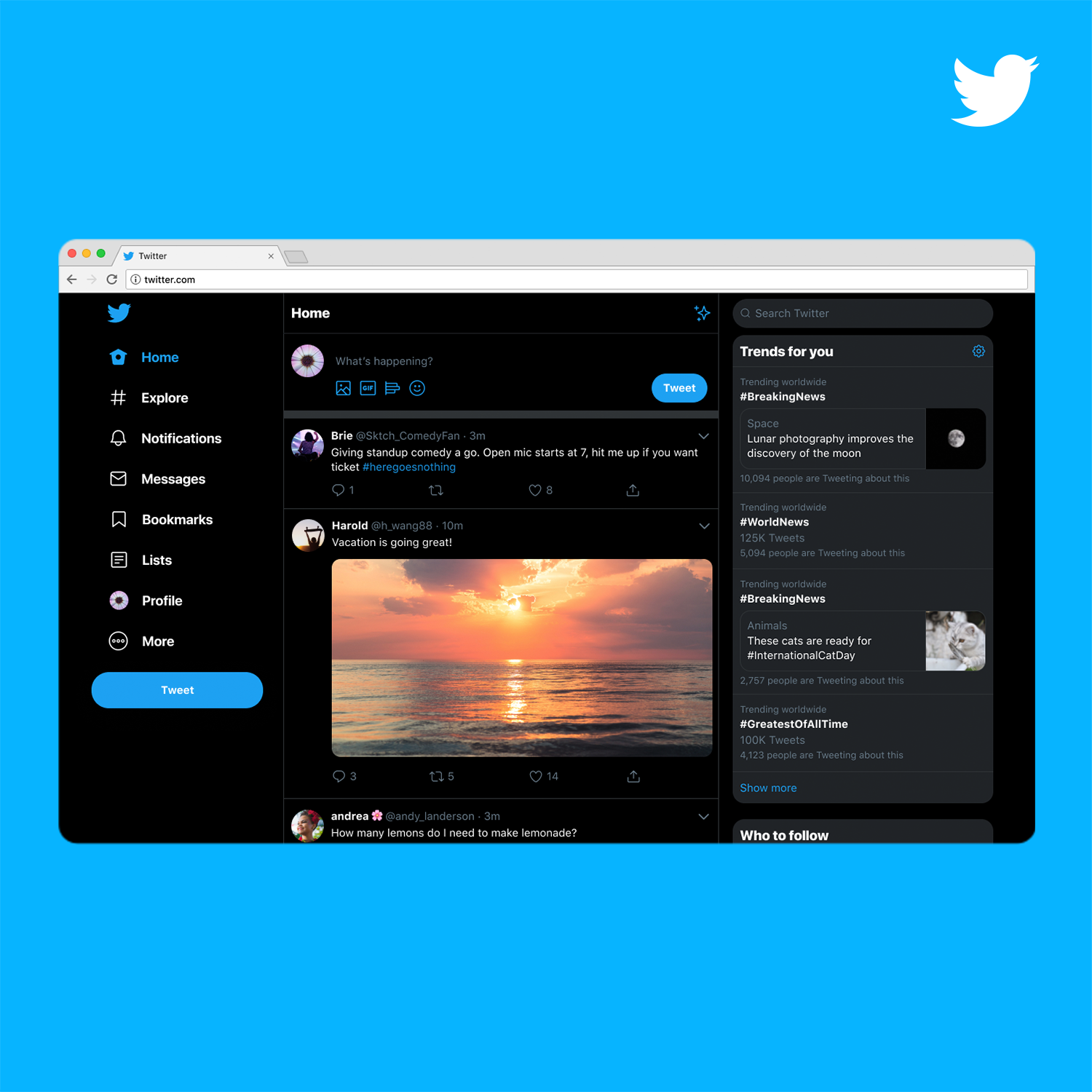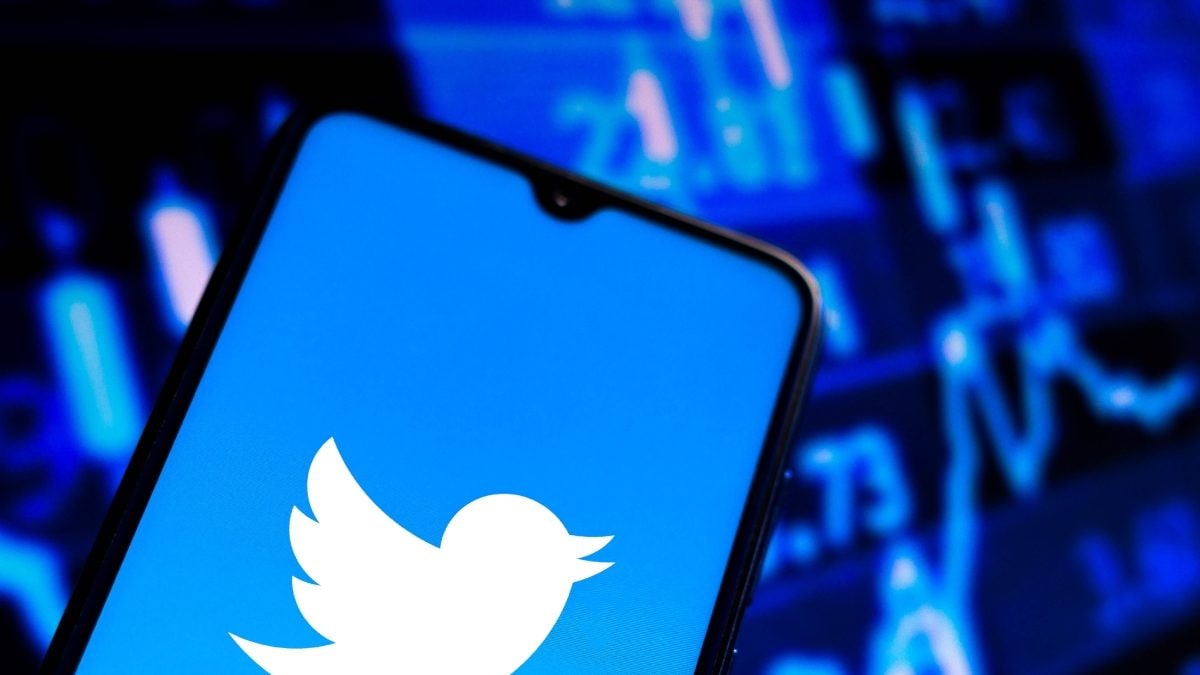Table of Contents
- Making Your Profile Look Its Best
- What is the Ideal Twitter Header Size?
- Why Does the Twitter Header Size Matter?
- Considering Your Profile Picture and Twitter Header Size
- File Types for Your Twitter Header Size
- How Cropping Affects Your Twitter Header Size
- Getting Your Twitter Header Size Ready for 2025
- Making Your Visuals Pop with the Right Twitter Header Size
- Summary of Twitter Header Size Tips
Making Your Profile Look Its Best
When you share things on a platform like Twitter, having your profile appear polished and inviting is, you know, pretty important. It’s like the front door to your online presence, giving folks a quick peek at who you are or what you're all about. A good first impression can really make a difference, drawing people in to learn more about what you have to say or show. Getting those visual elements just right, particularly the big banner at the very top, plays a rather significant role in how your whole page feels to someone visiting for the first time.
Think of that wide, short picture at the top of your profile as a kind of billboard, almost. It's the first thing someone's eye usually catches, even before they get to your latest thoughts or pictures. This visual space is a chance to express a bit of your personality, or maybe the core idea of what you represent. If that image is fuzzy, or perhaps cut off in an odd way, it can give a less-than-great impression, which, you know, is not what anyone wants when they're trying to put their best foot forward online. Making sure this particular picture looks sharp and fits well is, therefore, a key step in presenting yourself effectively.
Many people might not realize just how much a small detail like the correct dimensions for this top banner can influence how their entire profile is perceived. It's not just about picking a nice photo; it’s also about making sure that photo actually looks good once it's up there. Getting the size and shape right means your chosen image will show up clearly, without any weird stretching or parts missing. This little bit of effort can really help your profile convey the message you intend, making it much more welcoming for anyone who drops by, in a way.
- Whitney Cummings Boyfriend.https
- Joaquim Valente Height.https
- Marlene Santana Onlyfans.https
- Barron Trump Height Disease.https
- Money6xcom.https
What is the Ideal Twitter Header Size?
Getting the measurements right for your Twitter banner, sometimes called your header photo, is a pretty straightforward thing, actually. The platform has a specific size that works best to make sure your picture looks crisp and fits well across the top of your profile. For the most part, the perfect dimensions for this image are 1500 pixels across, or wide, and 500 pixels from top to bottom, or tall. This particular measurement gives your image a specific shape, which is often described as a 3:1 ratio, meaning it's three times wider than it is tall. This wide, short shape is what helps it sit nicely at the very top of your page, framing everything else you have going on below it, you know.
When you're picking out a picture or creating something for this spot, keeping those 1500 by 500 pixels in mind is quite helpful. If your image is too small, it might appear blurry or pixelated when it stretches to fill the space, which, really, doesn't look very good. On the other hand, if it's much larger but doesn't have that 3:1 proportion, parts of it might get cut off, and you could lose some of the important details you wanted to show. So, aiming for those exact numbers is a good way to start, ensuring your visual story is told clearly, in some respects.
This recommended size isn't just a random suggestion; it's what the platform itself indicates works best for how it displays your profile on different devices. Whether someone is looking at your page on a big computer screen or a smaller phone, these dimensions are designed to make sure your header photo appears as intended. It's about providing a consistent visual experience for everyone who visits your profile, which, basically, is a good thing for anyone trying to make a good impression online. So, remembering 1500 pixels wide by 500 pixels tall is a solid step.
Why Does the Twitter Header Size Matter?
You might wonder why all this talk about specific numbers for your Twitter header size is even a thing, and it’s a fair question. The truth is, the size of your banner picture really does make a difference in how professional or put-together your profile appears. Imagine going to a website where the main image is stretched out or looks fuzzy; it probably wouldn't leave you with a very good feeling about that site, would it? The same idea applies here. A header photo that fits just right shows that you pay attention to details and care about how your online presence looks, which, honestly, speaks volumes.
When your header picture is the correct size, it means that every part of the image you want people to see will be visible, and it will look clear. If your picture is too big, for instance, the platform might automatically cut off the top, bottom, or sides to make it fit, potentially hiding important text or parts of a face. If it's too small, it has to be expanded, and that often leads to a grainy or pixelated look, which is rather distracting. Getting the size right means your chosen visual tells its full story, without any unintended surprises or visual hiccups, as a matter of fact.
Moreover, a well-sized header contributes to the overall visual flow of your profile. It acts as a backdrop for your profile picture and your recent posts, creating a cohesive look. When everything aligns and looks good, it makes your profile more inviting and easier on the eyes for visitors. It’s like setting the stage for your content, making sure the first thing people see is polished and welcoming. This attention to the correct Twitter header size can help you convey your message more effectively and leave a lasting good impression, you know.
Considering Your Profile Picture and Twitter Header Size
Something really important to remember when you're setting up your Twitter header picture is that your smaller, round profile picture sits right on top of it, usually in the bottom left part of the header. This means that a section of your big banner picture will be covered up by your profile photo. So, when you're choosing or making your header, you need to think about that overlap, or else something important in your banner might end up hidden. It's a bit like arranging furniture in a room; you have to make sure everything fits together without blocking the view of something else, more or less.
If you have text or a key part of an image in the bottom left corner of your header, it will likely be obscured by your profile picture. This is a common oversight that can make a really good header look a little off. To avoid this, it's a good idea to keep your crucial elements, like any words or faces, centered or shifted slightly to the right or top of your header image. This way, even with your profile picture in place, your main message or visual will still be clear for everyone to see, which is, basically, the whole point.
Some people even use this overlap creatively, perhaps aligning their profile picture with an element in their header for a cool effect. But for most, the key is simply to be aware of it and plan around it. Taking a moment to consider where your profile picture will sit in relation to your chosen header image can save you from having to re-upload things later. It's a small detail, but one that really helps your overall profile presentation look clean and intentional, you know, which is something many people appreciate.
File Types for Your Twitter Header Size
Beyond just the width and height, thinking about the type of file your header picture is matters quite a bit too. Twitter, like most places online, accepts a few common picture formats that work well for displaying images. The most usual ones you'll come across are JPG, GIF, and PNG. Each of these has its own little quirks, but they all generally do a good job of showing off your visuals. Knowing which one to use can sometimes make a difference in how clear your picture looks or how quickly it loads for others, in a way.
JPG files are very common for photos, especially ones with lots of colors and smooth changes between them. They're good because they can make file sizes smaller, which means they load faster. PNG files are often preferred for images that have sharp lines, text, or transparent backgrounds, like logos. They keep things looking very crisp. GIFs, on the other hand, are typically used for animated pictures, though you can use them for still images too. It's just good to know that these are the main options you have when you're saving your header picture, you know.
It's also worth noting that there's a limit to how big your header file can be. While the exact limit might shift a little over time, generally, you want to keep your header picture under 5 megabytes. If your file is too large, the platform might not let you upload it, or it could take a very long time for people to see it when they visit your profile. So, picking one of these accepted formats and making sure your file size is reasonable are both pretty important steps in getting your header picture up and looking good, you know.
How Cropping Affects Your Twitter Header Size?
Even when you get the 1500 by 500 pixel size just right for your Twitter header, there's still a small detail to keep in mind: how the platform might slightly adjust or "crop" your picture. It's not a huge amount, but your header photo might be trimmed by about 60 pixels from both the top and the bottom, depending on how someone is viewing your profile. This means that the very edges of your picture, both at the top and the bottom, might not always be fully visible. It's a subtle thing, but it's good to be aware of it when you're designing, you know.
This slight trimming happens because Twitter tries to make your profile look good on all sorts of different screens, from big desktop monitors to small phone displays. To make sure the header scales properly and fits without weird empty spaces, it sometimes has to make these minor adjustments. So, if you have really important details or text placed right at the very top or bottom edge of your header image, there's a chance those bits might get cut off or become less visible. It's a bit like designing a poster where you know the frame will cover a little bit of the very edge, in a way.
To deal with this, the best practice is to keep any truly important parts of your header image, like faces, logos, or key words, away from those top and bottom edges. Try to center your main visual elements a bit more, giving them some breathing room from the very top and bottom borders. This way, even if the platform does trim a little off, your core message or image will still be perfectly clear and visible to everyone who sees your profile. It's a small planning step that can make a big difference in how your header looks, basically.
Getting Your Twitter Header Size Ready for 2025
Looking ahead, the recommended dimensions for your Twitter header size are pretty consistent, even as we move towards 2025. The ideal size of 1500 pixels wide by 500 pixels tall, with that 3:1 aspect ratio, remains the standard. This means that if you've already got a great header picture that fits these measurements, it's likely to continue looking good well into the future. Platforms like Twitter tend to keep these core visual requirements stable for a while, because changing them too often would be, you know, a bit of a hassle for everyone.
This consistency is good news because it means you can create your header picture with a good sense of confidence that it won't suddenly become outdated next year. You can put effort into designing something that truly represents you or your brand, knowing it has a bit of longevity. While other parts of the platform might change, like how tweets are displayed or new features that pop up, the fundamental space for your header picture seems to be staying put. So, focusing on those 1500 by 500 pixels is a solid plan for now and for what's coming, really.
Making sure your visuals are sharp on every device is also a part of this. A header that's the right size will automatically adjust better to different screen sizes, from someone's phone to their computer. This means your profile will look neat and professional no matter how someone is viewing it. So, getting these dimensions right isn't just about fitting the current rules; it's about setting yourself up for a visually appealing presence that lasts, which is, honestly, what most people are trying to achieve online.
Making Your Visuals Pop with the Right Twitter Header Size
Once you know the right measurements for your Twitter header size, the next step is to make sure the image you choose truly stands out. It's not just about fitting the box; it's about filling that box with something that grabs attention and tells a bit of your story. Think about what you want people to feel or understand when they first land on your profile. Do you want them to see your personality, your work, or perhaps a key message you're trying to share? The right image, correctly sized, can do all of that, you know.
Choosing an image that is high-quality to begin with is also very important. Even if you get the dimensions perfectly right, a blurry or low-resolution picture will still look fuzzy when it's displayed. So, start with a picture that is clear and crisp, ideally one that is already close to or larger than 1500x500 pixels, so it doesn't have to be stretched. This way, when you upload it, it will look just as good, if not better, than you hoped. It’s about giving your profile a polished, finished look, which, basically, makes a good impression.
Finally, remember that your header picture works together with your profile picture and your recent posts to create a whole picture of your online self. Make sure the colors and style of your header complement the rest of your profile. It's like putting together an outfit; you want all the pieces to work together to create a harmonious look. By paying attention to these details, and especially getting that Twitter header size just right, you can make your profile truly pop and invite others to connect with you, in some respects.
Summary of Twitter Header Size Tips
For your Twitter header, aiming for 1500 pixels wide by 500 pixels tall is the best approach. This size gives your banner a 3:1 shape, which fits well at the top of your profile. Remember that your profile picture will cover a part of the bottom left of your header, so keep important elements centered or away from that area. You can use JPG, GIF, or PNG files for your header, but try to keep the file size under 5 megabytes. Be aware that the platform might slightly trim about 60 pixels from the top and bottom of your header to make it fit different screens. These dimensions are expected to remain the standard for 2025, helping your profile look sharp and inviting across various devices.
- Emily Compagno Husband.https
- What Happened To Tia Mowry Daughter.https
- Kaitlan Collins Husband.https
- Elena Moussa.https
- Now Gg.https


